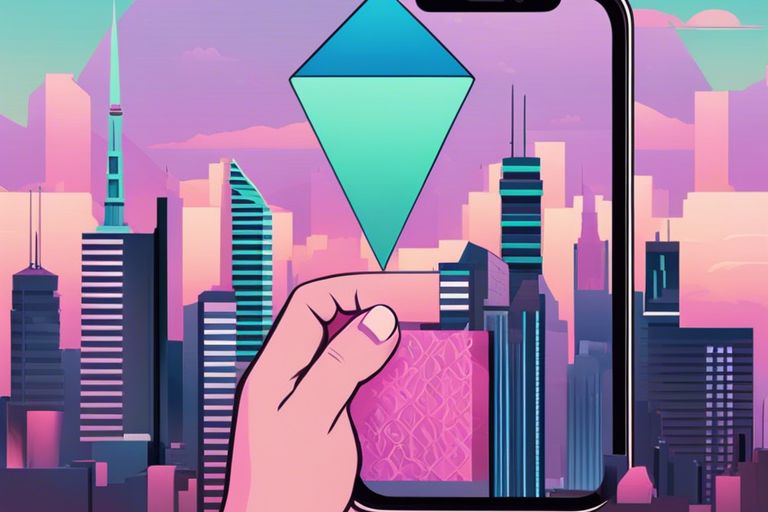How Can Artists Benefit From Selling Their Work As NFTs?
With the rise of blockchain technology, artists now have a revolutionary way to monetize their creative work – through Non-Fungible Tokens (NFTs). These unique digital assets provide artists with opportunities for greater control over their art, transparency in transactions, and the chance to reach a global audience like never before. Learn more about the potential advantages and risks that come with embracing NFTs as an artist.
The Rise of NFTs
What are NFTs?
The rise of NFTs has taken the art world by storm. NFTs, or non-fungible tokens, are unique digital assets that are one-of-a-kind and cannot be replicated or exchanged like-for-like. Each NFT is stored on a blockchain, providing proof of ownership and authenticity, and allowing artists to sell their work directly to collectors without the need for intermediaries.
The Growing Popularity of Digital Art
The digital art market has been steadily gaining traction over the years, with artists exploring new mediums and platforms to showcase their work. With the advent of NFTs, digital artists now have a way to monetize their creations in a secure and transparent manner. This has opened up a whole new world of opportunities for artists to reach a global audience and establish themselves in the digital art scene.
Another key factor contributing to the surge in popularity of digital art is the growing acceptance and recognition of digital art as a legitimate art form. Major institutions and art collectors are now embracing digital art, leading to increased demand and value for these works.

Benefits for Artists
Ownership and Control
There’s a significant benefit for artists in terms of ownership and control when selling their work as NFTs. On the blockchain, artists have the assurance that their work is authentic and cannot be replicated without their permission.
Monetization Opportunities
There’s control for artists over their work’s monetization potential through NFTs. By setting the terms of the smart contract, artists can earn royalties every time their piece is resold, providing a continuous stream of income.
Artists can embrace a new revenue stream by tapping into the resale market of their digital art. This allows them to benefit from the increased value of their work over time, leveraging the blockchain’s transparency to receive fair compensation.
Community Engagement
Ownership in the form of NFTs fosters a sense of community engagement between artists and their supporters. Through NFT marketplaces and social media, artists can directly connect with their audience, creating a closer, more interactive relationship.
With the ability to offer exclusive perks such as access to limited edition pieces or virtual meet-and-greets, artists can cultivate a loyal following and strengthen their brand presence in the digital art world.
Overcoming Challenges
Technical Barriers
Barriers such as the technical complexities of minting NFTs can be daunting for artists looking to enter the digital art market. Your limited knowledge of blockchain technology and smart contracts might pose a challenge when trying to navigate the NFT creation process. However, several user-friendly platforms and tutorials are available to help simplify the process and guide you through each step.
Market Volatility
With the market volatility surrounding cryptocurrencies, artists may be wary of entering the NFT space due to the unpredictable nature of digital asset values. However, by staying informed and strategically timing your NFT releases, you can potentially capitalize on market trends and maximize your earnings. Additionally, platforms like Foundation and Zora offer features that allow creators to set minimum prices for their NFTs, providing a level of control over the selling process.
Understanding the challenges and uncertainties that come with selling art as NFTs is crucial for artists looking to leverage this new marketplace. By educating yourself on the technical aspects and staying informed about market trends, you can navigate these obstacles and unlock the full potential of selling your work as NFTs.
To wrap up
Upon reflecting on the benefits of artists selling their work as NFTs, it is evident that this innovative technology provides artists with new opportunities to reach a global audience, secure ownership rights, and earn royalties on their creations. Embracing NFTs can empower artists to take control of their digital assets and thrive in the evolving digital art market. As this trend continues to grow, artists can leverage NFTs to expand their creative horizons and establish a sustainable income stream.
FAQ
Q: What are NFTs?
A: NFTs, or non-fungible tokens, are unique digital assets that represent ownership or proof of authenticity of a specific item or piece of content, such as art, music, videos, and more.
Q: How can artists benefit from selling their work as NFTs?
A: Artists can benefit from selling their work as NFTs in various ways, including earning royalties on secondary sales, reaching a global audience without intermediaries, and preserving the scarcity and value of their digital creations.
Q: What is the significance of NFTs in the art world?
A: NFTs have revolutionized the art world by providing artists with a new way to monetize their work, establish direct relationships with collectors, and ensure provenance and authenticity through blockchain technology.
Q: How do NFTs help artists protect their intellectual property rights?
A: NFTs use blockchain technology to create a secure and transparent record of ownership, allowing artists to prove the authenticity of their work, enforce copyright protection, and receive royalties automatically through smart contracts.
Q: Can artists sell limited editions of their work as NFTs?
A: Yes, artists can sell limited editions of their work as NFTs by creating a specific number of tokens representing the digital copies available for purchase, thus maintaining the scarcity and exclusivity of their art.
Q: What are some challenges artists may face when selling their work as NFTs?
A: Some challenges artists may face when selling their work as NFTs include understanding the technical aspects of blockchain technology, navigating the complex legal and tax implications, and dealing with environmental concerns related to the energy consumption of certain NFT platforms.
Q: Are there any best practices for artists looking to sell their work as NFTs?
A: Yes, some best practices for artists looking to sell their work as NFTs include partnering with reputable NFT marketplaces, promoting their collections through social media and online communities, collaborating with other artists or influencers, and continually engaging with collectors to build a loyal fan base.
![]()













